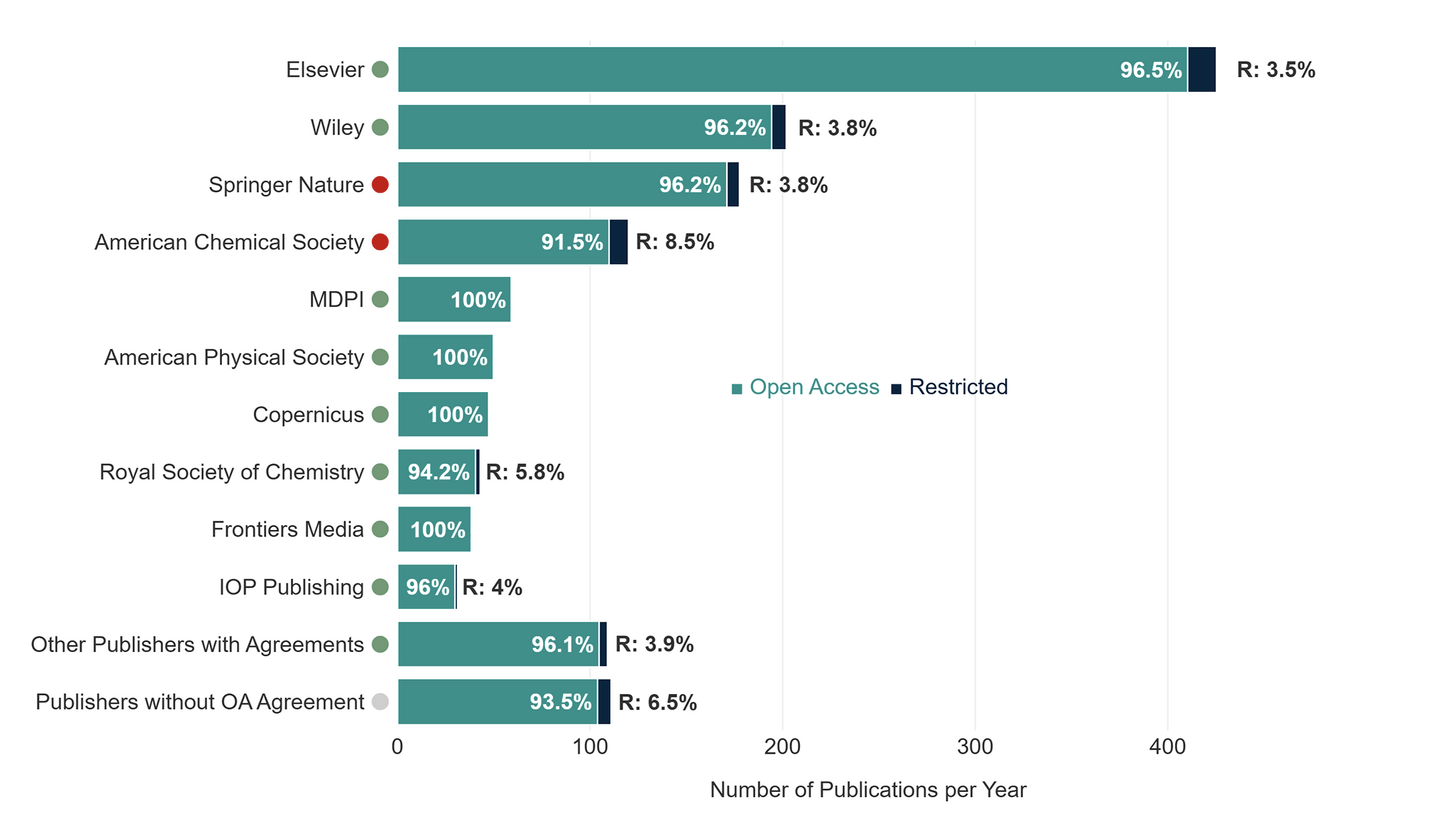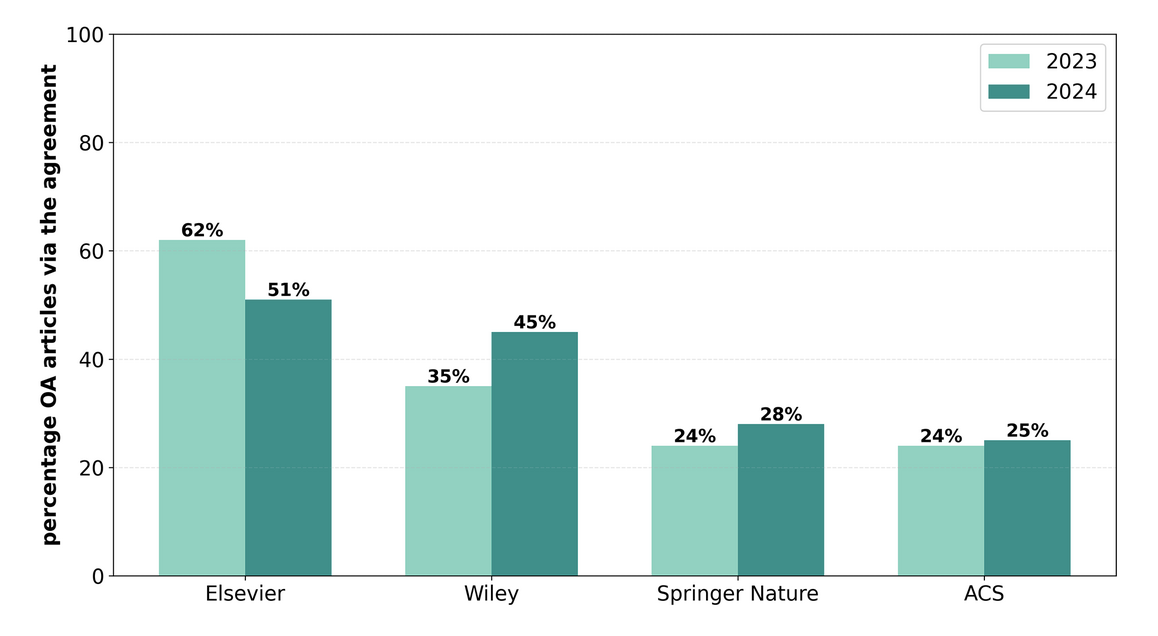Want to share your screen? See the person you're talking to? Contact us via digital library desk! We will be with you shortly.
Monday-Friday


Want to share your screen? See the person you're talking to? Contact us via digital library desk! We will be with you shortly.
Monday-Friday


With Open Access (OA) increasingly becoming the standard in academic publishing, OA agreements provide an easy and convenient way for authors to publish their work OA. However, there are also downsides to these agreements: they concentrate market power among large publishers and some agreements impose restrictive conditions on authors for OA publishing.
Since 2021, an increasing share of agreements with journal publishers have shifted to Read & Publish deals. These bundle two elements into a single fee: access to the publisher’s paywalled journals and the ability for affiliated authors to publish OA in those journals without paying individual Article Processing Charges (APCs).
There are also agreements with fully OA publishers (e.g. Copernicus, Frontiers, MDPI). These cover publishing costs but have no reading component because all articles are published OA.
From 2021–2024, over 90% of articles by researchers at the four Research Institutes appeared in journals covered by our OA agreements, meaning that the most important journals are already covered by OA agreements (Figure 1).

Figure 1. Yearly average number of articles (2021-2024) with a corresponding author affiliated with an RI, across the most frequently used publishers. Publishers with comparatively restrictive Open Access agreement conditions are indicated with a red dot next to their name, green dots indicate publishers with comparatively unrestrictive agreements. Please note that not all Open Access publications in DORA are the result of an OA agreement.
Each OA agreement has its own set of terms that limit the number of articles eligible for free OA under the agreement. Common restrictions include eligibility only for the corresponding authors at participating institutions and coverage limited to specific article types. Some agreements add stricter terms on OA publishing, which can make publishing under these agreements a frustrating experience. Notable examples of agreements with problematic restrictions on OA publishing are the agreements with Springer Nature (SN) and the American Chemical Society (ACS):
These restrictions reduce the share of articles published OA through these agreements compared with publishers without such limits (see Figure 2).

Figure 2. Share of articles that were published Open Access (OA) via the OA agreements in journals of the four most popular publishers for 2023 and 2024. The percentages reflect only articles published via the institutional OA agreements with the 4RIs; they do not include articles made OA through other pathways.
Over the past decade, OA agreements have driven a substantial rise in OA publishing at the four research institutes and across Switzerland. They offer a convenient route to OA for authors, but they also reinforce the market power of large commercial publishers. In practice, annual quotas, the exclusion of certain journals, and other restrictions can make publishing under these agreements frustrating for researchers.
The two agreements with the most relevant restrictions – those with Springer Nature and ACS – are set to expire at the end of 2025. Negotiations for their renewal are led by swissuniversities and are already underway. Our position: These problematic restrictions should be removed, and we support the negotiation team in pursuing that outcome. Given the complex nature of these existing agreements, we expect that securing favourable terms will require an intensive and lengthy process. We will continue to provide updates as negotiations progress.